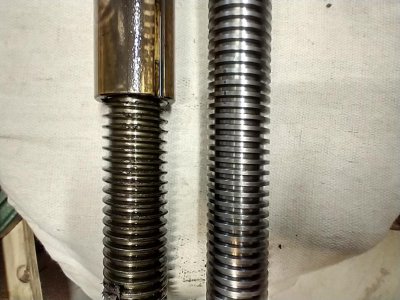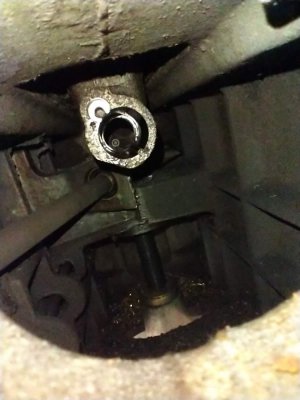- Joined
- Dec 3, 2014
- Messages
- 497
Okay, I want to solicit opinions / advice on if I should "fix" the hen pecks and other blemishes in the mill table.
They're not terrible, but they're not good either. I don't have a good pic of the table right now but I'll post one tomorrow. You can see a bit of what I mean at the 31 second mark in the video at the top of post 19.
If I should, what methods should I consider? I've been thinking of milling plastic to the exact width of the slots, then coating the plastic in mould release to block the slots during the repair process.
Then I'd clean the stank out of the table so it is pristine. Then I could mix epoxy with glass microspheres and graphite powder or maybe some steel powder and fill the holes and all the little dings and such. The plastic would insert into the slots to keep the epoxy out, and to allow the few holes that penetrated the edge of the slots to be filled.
Then I'd just need to mill the bed close and stone the repairs the final bit even with the bed.
Or weld fill and grind.. but wonder if that will put stresses into the table?
I'm going to rule out cast iron plugs.
They're not terrible, but they're not good either. I don't have a good pic of the table right now but I'll post one tomorrow. You can see a bit of what I mean at the 31 second mark in the video at the top of post 19.
If I should, what methods should I consider? I've been thinking of milling plastic to the exact width of the slots, then coating the plastic in mould release to block the slots during the repair process.
Then I'd clean the stank out of the table so it is pristine. Then I could mix epoxy with glass microspheres and graphite powder or maybe some steel powder and fill the holes and all the little dings and such. The plastic would insert into the slots to keep the epoxy out, and to allow the few holes that penetrated the edge of the slots to be filled.
Then I'd just need to mill the bed close and stone the repairs the final bit even with the bed.
Or weld fill and grind.. but wonder if that will put stresses into the table?
I'm going to rule out cast iron plugs.
Last edited:



